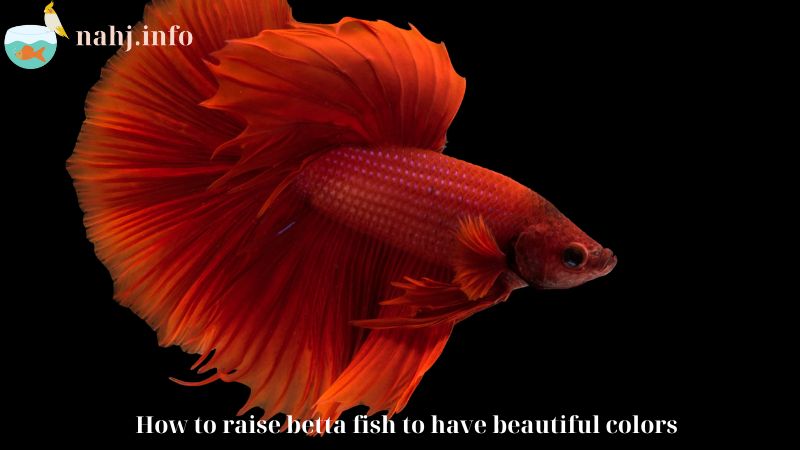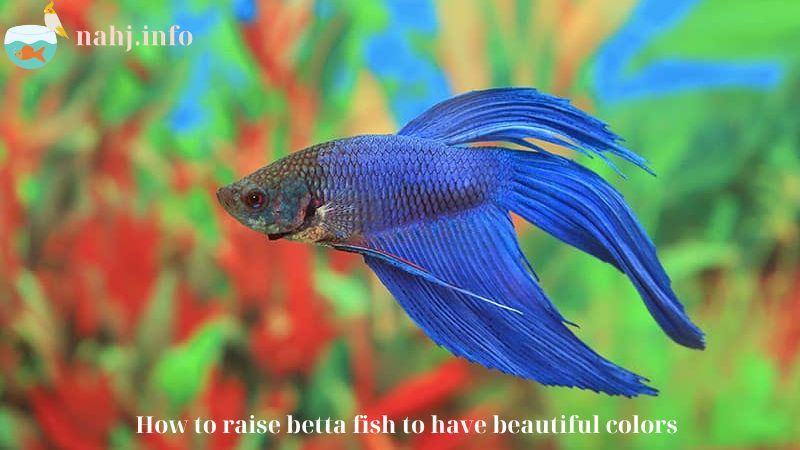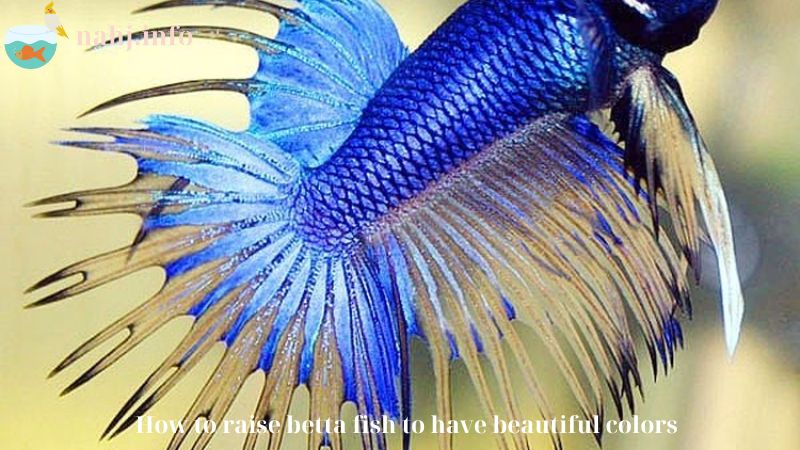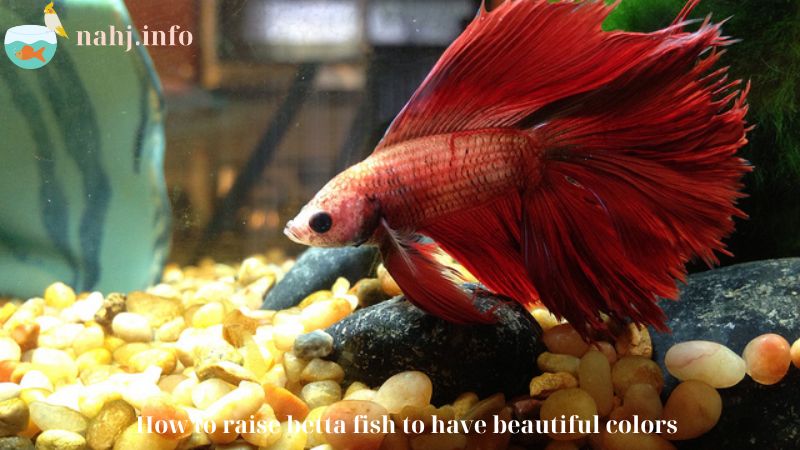How to raise betta fish to have beautiful colors? Betta fish, also known as Siamese fighting fish or fighting fish, are famous for their vibrant colors and graceful long fins. To raise beautiful colored Betta fish, breeders need to pay attention to many factors from diet, living environment, to daily care. In this article, nahj.info will learn in detail about How to raise betta fish to have beautiful colors?
Introduction to Betta Fish
Betta fish are a popular ornamental fish, originating from Southeast Asia, mainly Thailand and Cambodia. They come in many different colors and fin shapes, from red, blue, yellow, to white, black and even mixed colors. Betta fish are loved not only for their beauty but also for their strong personality and ability to live in still water environments.
How to raise betta fish to have beautiful colors?
1. Choosing Betta Fish Breeds

First, choosing the Betta fish breed is an important factor. You should choose fish with bright colors, no diseases, and perfect fin shape. Betta fish have many types such as Halfmoon Betta, Plakat Betta, Crowntail Betta, and Veiltail Betta. Each type has its own beauty and different care requirements.
2 . Health Check
When buying Betta fish, check their health carefully. Healthy Betta fish will swim flexibly, have bright colors, and have no signs of disease such as white spots, ulcers, or torn fins.
3. Prepare the Living Environment
a. Choosing a Fish Tank
Betta fish can live in small tanks, but for them to grow well and have beautiful colors, you should choose a tank with a size of at least 10 liters or more. A large tank gives the fish a comfortable swimming space and reduces stress.
b. Equipped with a Filtration and Heating System
A water filtration system helps maintain water quality, removes harmful substances and keeps the water clean. A water heater helps maintain a stable temperature, ideally between 25-28 degrees Celsius, helping Betta fish grow well and have beautiful colors.
c. Aquatic Plants and Decorations
Aquatic plants not only beautify the aquarium but also provide hiding places for Betta fish. You should choose plants such as Java Fern, Anubias or Moss Balls. Decorations such as caves and rocks also help create an interesting space for the fish.
4. Diet

a. High-Quality Food
Betta fish need a nutritious diet to have beautiful colors. You should choose specialized foods for Betta fish, such as pellets, frozen foods (such as artemia, red worms) and live foods. These foods provide adequate protein, vitamins and minerals.
b. Feeding Schedule
You should feed your Betta fish 2-3 times a day, each time a small amount just enough for the fish to eat in about 2-3 minutes. Avoid overfeeding to avoid polluting the water and causing obesity for the fish.
5. Daily Care
a. Regular Water Changes
Regular water changes are important to maintain a clean living environment for your Betta fish. You should change about 25-30% of the water in the tank every week. When changing the water, use dechlorinated water that is the same temperature as the water in the tank.
b. Check Water Quality
Water quality plays an important role in helping your Betta fish develop beautiful colors. You should regularly check water parameters such as pH, ammonia, nitrite and nitrate. Keep the pH at 6.5-7.5 and ensure that toxic substances are always at safe levels.
c. Fish Health Observation
Observe your Betta fish daily to detect early signs of disease. If you see strange signs in your fish such as slow swimming, discoloration, torn fins or white spots, you need to isolate the sick fish and treat them promptly.
6. Common Diseases in Betta Fish
a. Fungal Disease
Fungal diseases often appear as white spots on the body and fins of the fish. To treat them, you can use antifungal drugs and increase the water temperature to about 28-30 degrees Celsius.
b. Fin Ruffling Disease
Fin ruffling disease causes the fish’s fins to tear and ruffle. You need to change the water regularly, keep the environment clean and use medicine to treat the disease according to the veterinarian’s instructions.
c. Fin Rot
Fin rot causes the fish’s fins to rot and lose color. You should change the water regularly, use fin rot medicine and supplement nutritious food to increase the fish’s resistance.
7. Create the Best Coloring Conditions

a. Use LED Lights
LED lights can help Betta fish have more beautiful colors. You should choose LED lights with white or blue light to create optimal conditions for the fish. The lights should be turned on for about 8-12 hours a day.
b. Supplement Vitamins and Minerals
Vitamins and minerals help enhance the natural color of Betta fish. You can supplement them through food or use liquid vitamin supplements added to the water.
c. Reduce Stress for Fish
Stress is one of the reasons why Betta fish do not have beautiful colors. You need to ensure a quiet living environment, avoid loud noises and do not change the water environment suddenly. Providing hiding places such as caves and aquatic plants also helps the fish feel safe and less stressed.
8. Combine Care Methods
a. Plan Long-Term Care
Raising Betta fish is not only about daily care but also requires a long-term plan. You should plan to change the water, check the health and supplement nutrition periodically to ensure the fish are always in the best condition.
b. Learn from the Community
Join Betta fish communities on social media or forums to learn from other fish keepers. They can share tips and tricks and how to deal with problems encountered during the fish keeping process.
Conclusion
Raising beautiful colored Betta fish is not too difficult if you understand and follow the principles of proper care. From choosing the fish breed, preparing the living environment, diet to daily care, each factor plays an important role in helping your Betta fish grow healthy and have bright colors. Hopefully, this article will provide you with useful information to effectively raise Betta fish and achieve the desired results.

